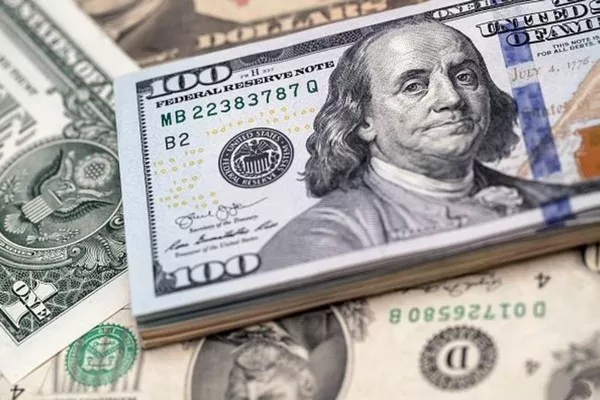Exchange rates play a fundamental role in international trade and finance, influencing everything from the cost of your overseas vacation to the profitability of multinational corporations. In this article, we delve into the complex dynamics that govern the exchange rate of the U.S. dollar to the Indian rupee, demystifying the factors that drive these fluctuations.
Understanding Exchange Rates
Exchange rates represent the value of one currency in terms of another. In the context of the U.S. dollar to Indian rupee exchange rate, it tells you how many rupees you can get for one U.S. dollar. Exchange rates are dynamic and influenced by a variety of factors. Let’s explore these factors in detail.
Interest Rates: One of the most significant drivers of exchange rates is the difference in interest rates between two countries. When a country’s interest rates are higher, it often attracts foreign capital seeking better returns. This increased demand for that country’s currency strengthens its exchange rate. Conversely, lower interest rates can lead to a weaker currency.
Economic Indicators: Key economic indicators, such as GDP growth, employment rates, and inflation, can significantly affect exchange rates. Strong economic performance often results in a stronger currency, while economic uncertainties can lead to depreciation.
Central Bank Policies: Central banks, like the U.S. Federal Reserve and the Reserve Bank of India, have the power to influence exchange rates. Adjustments to interest rates, monetary policy, and intervention in the foreign exchange market can all impact the value of their respective currencies.
Market Sentiment: Investor perception and market sentiment play a vital role in currency valuation. Geopolitical events, trade disputes, and other global factors can lead to rapid currency movements.
The U.S. Dollar to Indian Rupee Exchange Rate
Now, let’s focus specifically on the U.S. dollar to Indian rupee exchange rate. The exchange rate is influenced by a combination of domestic and international factors, which can lead to both short-term fluctuations and long-term trends.
Interest Rate Differentials: Differences in interest rates between the U.S. and India have a substantial impact on the exchange rate. Historically, higher U.S. interest rates attract global investors seeking higher returns, leading to a stronger dollar and a weaker rupee.
Inflation Rate: Inflation erodes the purchasing power of a currency. If one country experiences significantly higher inflation rates than another, its currency is likely to depreciate in comparison. Inflation differentials between the U.S. and India can affect the exchange rate.
Economic Performance: The economic health and performance of the United States and India also play a role. A robust U.S. economy can drive demand for the dollar, while a thriving Indian economy may boost the rupee. Trade balances, employment rates, and other economic indicators impact this dynamic.
Central Bank Actions: The U.S. Federal Reserve and the Reserve Bank of India wield influence over their respective currencies. Changes in monetary policy, interest rate decisions, and intervention in the foreign exchange market can directly impact the dollar-rupee exchange rate.
Market Sentiment and Global Factors: Geopolitical events, trade tensions, and market sentiment can lead to short-term fluctuations. For example, an international crisis can lead to a flight to safety, strengthening the dollar.
Historical Trends
Historically, the exchange rate of the U.S. dollar to the Indian rupee has seen periods of stability as well as considerable volatility. Several key trends and events have shaped this exchange rate:
1970s and 1980s: The rupee was pegged to the British pound during the early post-independence years, but in 1966, it was officially linked to the U.S. dollar. The rupee remained stable at around 7.5 rupees to a dollar for several decades.
1991 Economic Reforms: India undertook significant economic reforms in 1991, leading to a partial convertibility of the rupee and a move towards a more market-determined exchange rate. This marked the beginning of a more flexible exchange rate regime.
Fluctuations in the 21st Century: In the 21st century, the exchange rate has experienced notable fluctuations. The rupee weakened significantly against the dollar during the global financial crisis of 2008 but strengthened in the years that followed. Factors such as economic reforms, changing interest rates, and global economic conditions have influenced these fluctuations.
Current Factors Impacting the Exchange Rate
COVID-19 Pandemic: The COVID-19 pandemic has had a profound impact on global economies, including India’s. The Reserve Bank of India implemented measures to stabilize the rupee, but the exchange rate was still affected by economic uncertainties.
U.S. Monetary Policy: The Federal Reserve’s response to the pandemic, including interest rate policies and quantitative easing, has had implications for the dollar’s value and, consequently, the exchange rate.
Bilateral Trade and Investment: Trade relationships between the U.S. and India also influence the exchange rate. Trade deficits, tariffs, and investment flows play a role in determining the relative value of the two currencies.
Conclusion
The exchange rate of the U.S. dollar to the Indian rupee is influenced by a complex interplay of economic, financial, and geopolitical factors. Understanding these dynamics is crucial for businesses, investors, and policymakers. The exchange rate not only affects international trade and investment but also impacts the purchasing power of individuals and the overall economic health of a country. As the world continues to evolve, so too will the exchange rate dynamics between the U.S. dollar and the Indian rupee, making it a subject of ongoing interest and study in the field of finance and economics.


